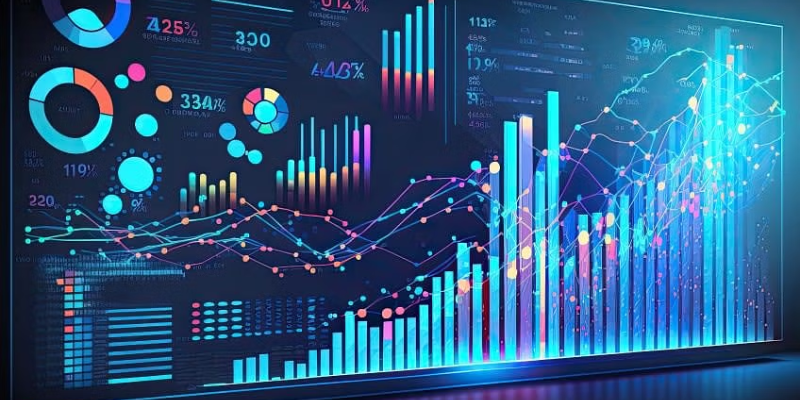
In the era of big data, the ability to extract insights from vast datasets is a fundamental skill for informed decision-making. Data Analysis is the systematic process that transforms raw data into valuable information, guiding organizations and individuals in understanding patterns, trends, and relationships within the data. In this blog, we will explore what is data analysis and its intricacies, delve into different Data Analysis types, and uncover the methods and techniques that make this discipline a linchpin for extracting actionable intelligence.
Data Analysis Process
The Data Analysis process is a structured journey involving several key steps, each contributing to the goal of extracting meaningful information. The process typically includes:
1.Data Collection: Gathering the Raw Material
The journey begins with collecting data from various sources, such as databases, surveys, or sensors. The collected data’s quality and relevance significantly impact the analysis’s effectiveness.
2.Data Cleaning and Preparation: Refining the Raw Material
Once collected, raw data often requires cleaning and preparation to address inconsistencies, errors, and missing values. This step ensures the data is accurate, complete, and ready for analysis. There are many Top MBA B Schools in Chennai.
3.Exploratory Data Analysis (EDA): Unveiling Patterns and Trends
EDA involves exploring the data through statistical summaries, visualizations, and other exploratory techniques. Analysts seek to understand the main features of the dataset, identify outliers, and uncover patterns that may guide further analysis.
4.Statistical Analysis and Modeling: Extracting Insights
Statistical analysis and modeling are at the core of Data Analysis. Regression analysis, hypothesis testing, and machine learning algorithms are applied to extract insights, validate hypotheses, and make predictions based on the data.
5.Data Visualization: Communicating Findings Effectively
The final step involves presenting the findings clearly and concisely. Data visualization, through charts, graphs, and dashboards, transforms complex information into visual representations that are accessible and understandable for a broader audience.
Types of Data Analysis
MBA in Data Analytics comes in various types, each serving a specific purpose and addressing distinct questions. Three primary types are:
1.Descriptive Data Analysis: Understanding the Past
Descriptive analysis focuses on summarizing and presenting data to describe its main features. It involves measures like mean, median, and mode, as well as graphical representations, providing a snapshot of the data’s central tendencies and distributions.
2.Diagnostic Data Analysis
Diagnostic analysis delves deeper into understanding the reasons behind observed phenomena. It aims to identify the aspects that contribute to specific outcomes or trends, providing insights into the “why” behind certain patterns in the data.
3.Predictive Data Analysis: Anticipating the Future
Predictive analysis uses historical data to construct models to forecast future trends or outcomes. This type of analysis is essential for making informed decisions based on anticipated scenarios, contributing to strategic planning and risk management.
Methods of Data Analysis
Several methods are employed in Data Analysis, depending on the data’s nature and the analysis’s objectives. Notable methods of data analysis include:
1.Regression Analysis: Understanding Relationships
Regression analysis examines the relationships between dependent and independent variables. It is valuable for predicting outcomes based on historical data and understanding how changes in one variable may impact another.
2.Hypothesis Testing: Validating Assumptions
Hypothesis testing is referred to as a statistical technique used to validate assumptions or claims about a population parameter. It provides a systematic way to determine whether observed patterns are statistically significant or occur by chance.
3.Cluster Analysis: Grouping Similar Entities
Cluster analysis involves grouping similar data points based on predefined criteria. This method is useful for segmentation, pattern recognition, and uncovering natural groupings within the data. Several colleges offer MBA Courses in Chennai.
Techniques in Data Analysis
Data Analysis incorporates sophisticated techniques to handle complex datasets and extract nuanced insights as technology advances. Some advanced techniques include:
1.Machine Learning: Unleashing Predictive Power
Machine learning algorithms is a subset of artificial intelligence that enhances Data Analysis by automating the identification of patterns and making predictions without explicit programming. Classification, regression, and clustering are machine learning techniques applied in data analysis. There are many MBA Offering Colleges in Chennai.
2.Text Analytics: Extracting Insights from Textual Data
Text analytics centers on extracting valuable insights from unstructured textual data. Natural language processing (NLP) and sentiment analysis are techniques within text analytics that help decipher meaning and sentiment from written content.
3.Time Series Analysis: Unraveling Temporal Patterns
Time series analysis involves studying data points collected over time to find patterns, trends, and seasonality. This technique is precious for forecasting future values based on historical data.
Data Analysis is a dynamic and multifaceted discipline that empowers individuals & organizations to make informed decisions in an increasingly data-driven world. By understanding the process, types, methods, and techniques, analysts can navigate the complexities of data and extract actionable intelligence that drives innovation, efficiency, and success. Many colleges provide MBA Data Analytics in Chennai.